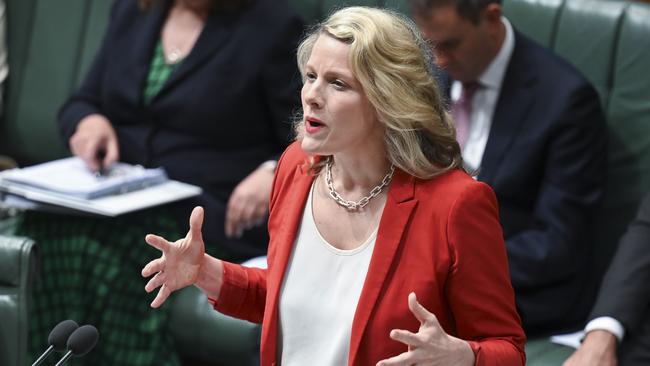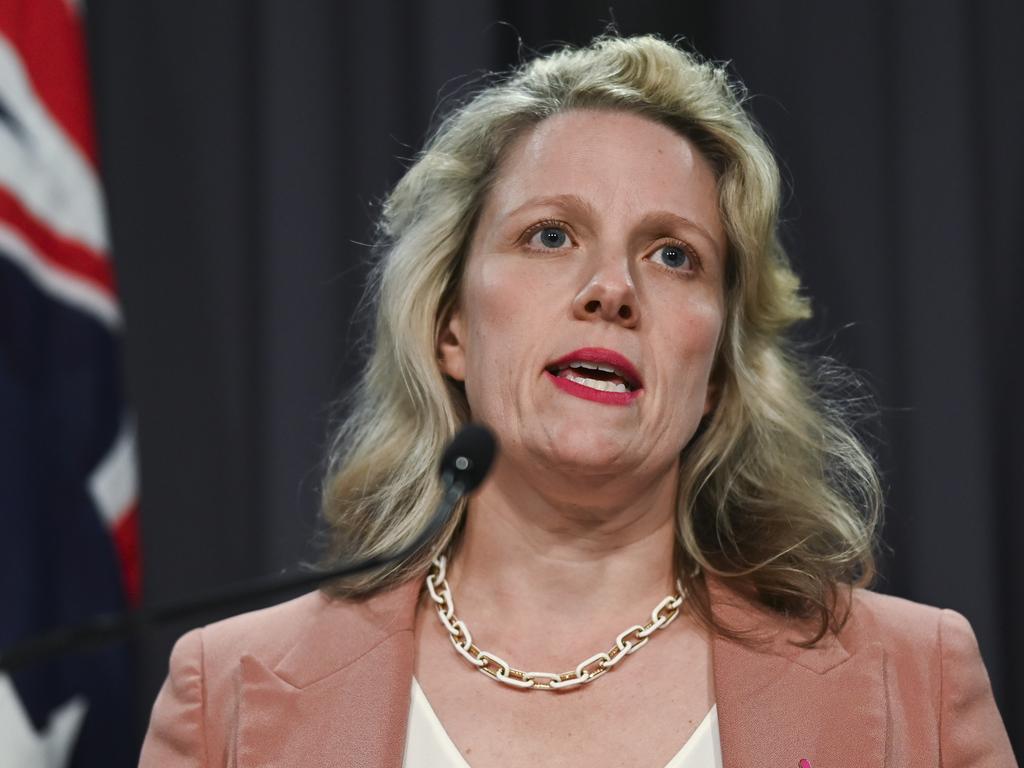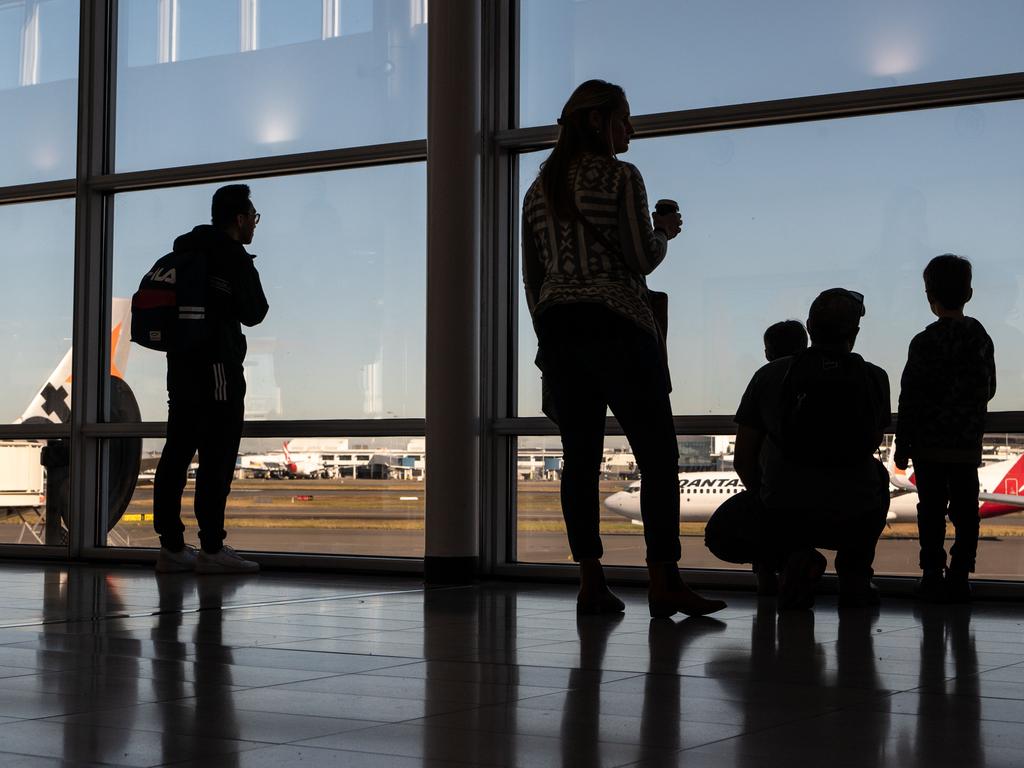Labor to create new 'skills in demand' visa, raise English language requirements
There will be 185,000 fewer migrants over four-years, rorts will be targeted in international education and permanent skilled migration restored.

The Albanese government will create a new “skills in demand” visa and raise English-language requirements for all international students, to restore border control and suppress the temporary migration boom that has put cities under tremendous strain, led to worker exploitation and left hundreds of thousands of young foreigners in limbo.
To be launched on Monday, Labor’s Migration Strategy will seek to cut the overall intake, restore the social licence of the failing visa system, for which community support has slumped amid a world-leading post-pandemic population boom, and reframe migration to its historic, nation-building role.
Home Affairs Minister Clare O’Neil said the nation could not sustain the migrant inflow of recent years, with almost 900,000 students, temporary workers and permanent settlers arriving in two years.
Ms O’Neil claimed the government’s policy tightening will now lead to a cumulative 185,000 fewer migrants over the budget’s four-year time frame.
The blueprint is built on five principles, with an emphasis on the skills Australia needs most to boost productivity and permanency to encourage social cohesion and cultural vibrancy, in line with the wide-ranging review led by former top civil servant Martin Parkinson.
Ms O’Neil said the road map “is a commitment to getting our system back on track and to returning migration levels back to normal and using that reduction in migration levels to move to the system we need for Australia’s future”.
“Australia’s migration system is not the nation building engine it once was,” she said.
“It often fails to identify and attract those people who are best placed to help build the skills base of Australia’s workforce, boost exports and raise living standards.”
The road map is built on eight drivers, including the delivery of existing visa and integrity reforms, new policy commitments over the coming 12 months, and longer-term changes to be developed in partnership with second-tier governments, businesses and unions.
Ms O’Neill vowed to abolish visa settings that drive long-term temporary stays (known as ‘permanent temporariness’), including through shortening graduate visas and ending settings that allow graduates to prolong their stay in Australia when they have fewer prospects of becoming permanent residents.
The Home Affairs Minister flagged an enhanced “points system” for permanent migrants, as well as updated occupation lists to better target the short-term needs of employers.
“The benefits of getting the points system for permanency right is massive,” she said.
The new strategy aims to simplify a complex system, which customarily deters the most talented young people, while expediting approval for the most desirable temporary workers to drive innovation and job creation.
These specialists must be paid at least $135,000 a year, placing them in the top 10 per cent of earners, and can be in any occupation, except trades workers, machinery operators and drivers, and labourers.
As well, the strategy aspires to properly allocate working holiday makers to regions and to implement better long-term population planning with the states, although the details of how this will occur are a work in progress.
At the end of October there were 2.3 million people in Australia on temporary visas with work rights. In 2000, the number of temporary migrants was around 700,000.
The Mid-Year Economic and Fiscal Outlook, to be released on Wednesday, will show net overseas migration peaking at 510,000 in the year to June, compared with the budget estimate of 401,700.
For the current financial year, the migrant inflow is projected to be 375,000, a one-fifth blowout on Treasury’s May forecast of 316,000.
Of this year’s estimated inflow, 190,000 places will be in the permanent program, with over 70 per cent designated for the skilled stream.
Writing for The Australian online, Ms O’Neil said the “first problem we have to solve is to get migration levels back to sustainable, normal levels”.
“Numbers were always going to surge post-pandemic, but we cannot sustain the levels of migration we have seen in recent years,” she writes.
“There is too much pressure on housing and infrastructure.
“Our migration program only works with community support and to retain that, we must make a significant correction.”
The new four-year skills in demand visa, with full mobility and clear pathways to permanent residence, will replace the complex single-employer-sponsored Temporary Skill Shortage visa that business and unions agree is not fit for purpose.
The visa will be backed by three pathways, adopting the Parkinson Review’s model of a risk-based approach to regulation, including specialist, core skills and a lower paid tiers, with legislated indexation of wage thresholds to maintain integrity.
“A key feature of this visa is an alternative approach to mobility, with new visa settings, streamlined applications and consideration of trailing employer fees that remove many onerous conditions that tie a migrant to a single employer,” the strategy said.
“These features will help design out elements that contribute to worker exploitation and reduce barriers to job switching in the labour market, which will lead to a more productive workforce.”
The government argues this new model allows for worker mobility across industries, which better reflects the nature of how skills are used, and how they will be increasingly used, in the labour market.
For example, the most common occupation in the current Temporary Skill Shortage visa is a software engineer; like most occupations, a software engineer’s skills can be used across industries, such as in manufacturing, transport and logistics or financial services.
The strategy says the specialist stream, with the aim for a median turnaround of seven days of visa processing, will help Australia attract highly skilled engineering managers who develop electrolysers to help with our transition to a net-zero economy, cyber specialists who assist banks to respond to cyber-attacks and software engineers who help Australia embrace the artificial intelligence transformation.
The core skills stream must be paid at least $70,000 and will reflect current needs identified by Jobs and Skills Australia, such as a Registered Nurse who is helping a regional hospital’s emergency department deal with acute workforce shortages or a Secondary School Teacher helping teach science in our public schools.
The strategy says more work is needed to develop how best to regulate migration for lower paid workers with essential skills.
Early next year, the government will consult with state and territory governments, unions, businesses and migrant workers to determine limits.
As well, the strategy hopes to streamline labour market testing to reduce complexity,
create a best practice service level agreement for processing times and establish a modernised accreditation pathway to better compete for talent.
Chief executive of the Committee for Economic Development of Australia Melinda Cilento said “for too long, our migration system has lacked a cohesive and long-term strategic direction”.
“Instead, we’ve had a revolving door of changes that caused uncertainty, unpredictability and confusion for anyone using or relying on the system – migrants, employers and the broader community alike,” Ms Cilento said.
“We must get the right skills in the right places, and the focus on this, as well as simplifying the system and more transparency, is the right way to go.”








To join the conversation, please log in. Don't have an account? Register
Join the conversation, you are commenting as Logout